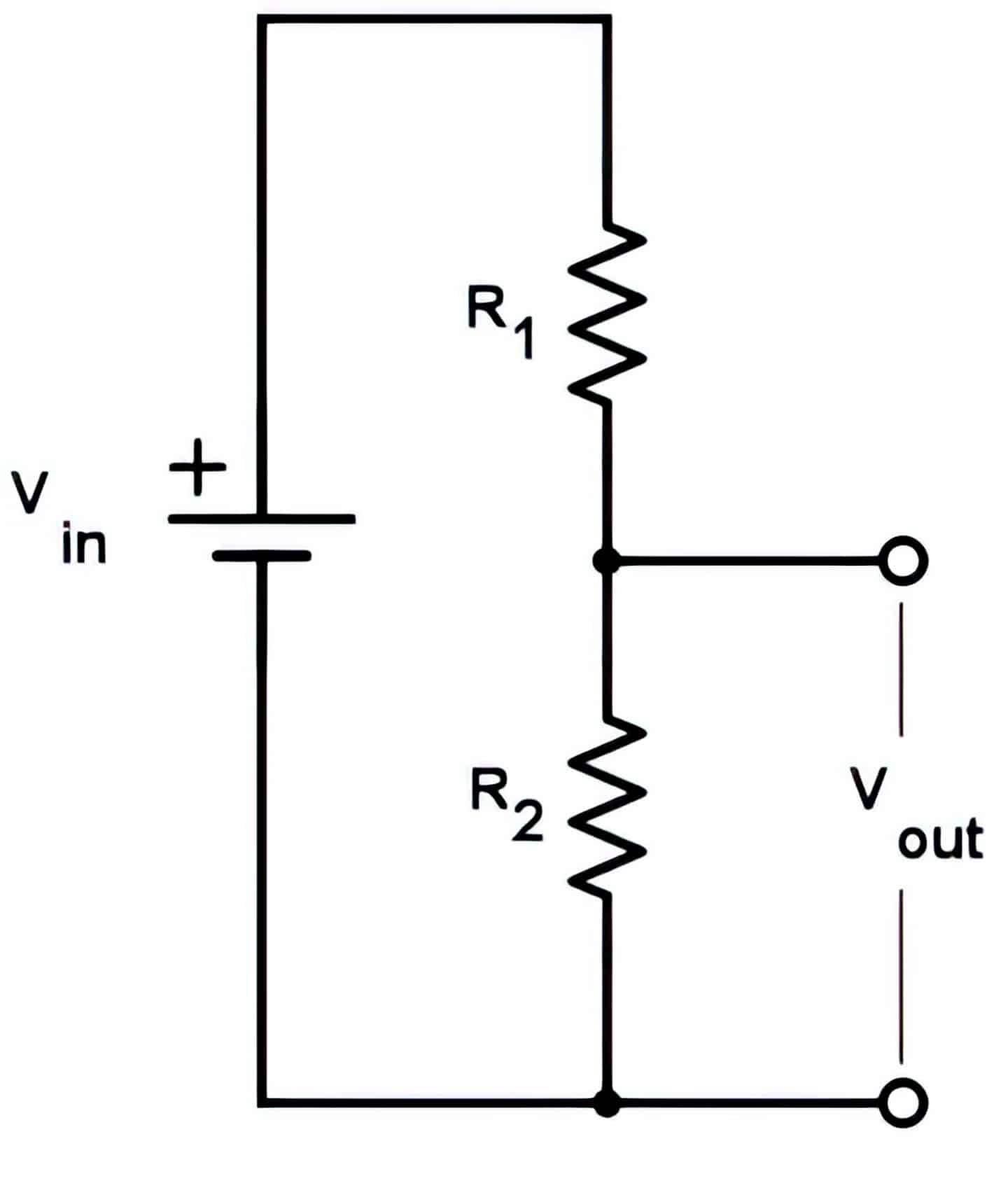A voltage divider is a simple but fundamental circuit that is very commonly used in electronics. Its working principle is simple: a higher input voltage is applied to the input and then converted to a lower output voltage using a pair of resistors. The formula for calculating the output voltage is based on Ohm’s law and is given below.
In the calculator below, enter any three known input voltage Vin, required output voltage Vout and resistance R1 values and press “Calculate” to find the resistance R2 value.
Like this? Please share:
Main circuit of the voltage divider:

Voltage Divider Formula
The voltage divider formula is Vout = Vin * R2 / (R1 + R2), where Vin is the input voltage and R1 and R2 are the two resistors in series. This formula is used to calculate the output voltage across R2 when a voltage is applied across the series combination of R1 and R2. By adjusting the values of R1 and R2, different output voltages can be obtained.
The formula for calculating R2 using the voltage divider formula is R2 = (Vout * R1) / (Vin – Vout).
Example
Suppose we have a circuit with an input voltage of 12V and two resistors R1 and R2 in series. The value of R1 is 1kΩ and we want to calculate the value of R2 that would result in an output voltage of 5V across it.
Using the voltage divider formula, we can calculate R2 as follows:
R2 = (Vout * R1) / (Vin – Vout) = (5 * 1000) / (12 – 5) = 714.29 Ω
Therefore, in this example, the value of R2 required to achieve an output voltage of 5V is approximately 714.29 Ω.
Simplifications
There are several generalizations to consider when using voltage dividers. These are simplifications that make it easier to evaluate a voltage divider circuit.
- When R2 and R1 are equal, the output voltage is half the input voltage. This is true regardless of the resistor values. So, if R1 = R2, we get the following equation: Vout = Vin * R1 / (R1 + R1) = Vin * R1 / (2R1) = Vin / 2
- If R2 is an order of magnitude larger than R1, the output voltage Vout will be very close to Vin, i.e. Vin ≈ Vout. And there will be very little voltage across R1. So, if R2 >> R1, we get the following equation: Vout ≈ (Vin * R2) / R2 ≈ Vin.
- On the other hand, if R1 is an order of magnitude larger than R2, then Vout will be very small compared to Uin, i.e. it will tend to zero (Vout ≈ 0).Practically all of the input voltage will then drop across R1. So, if R1 >> R2, we get the following equation: Vout ≈ (Uin * 0) / R1 ≈ 0.
